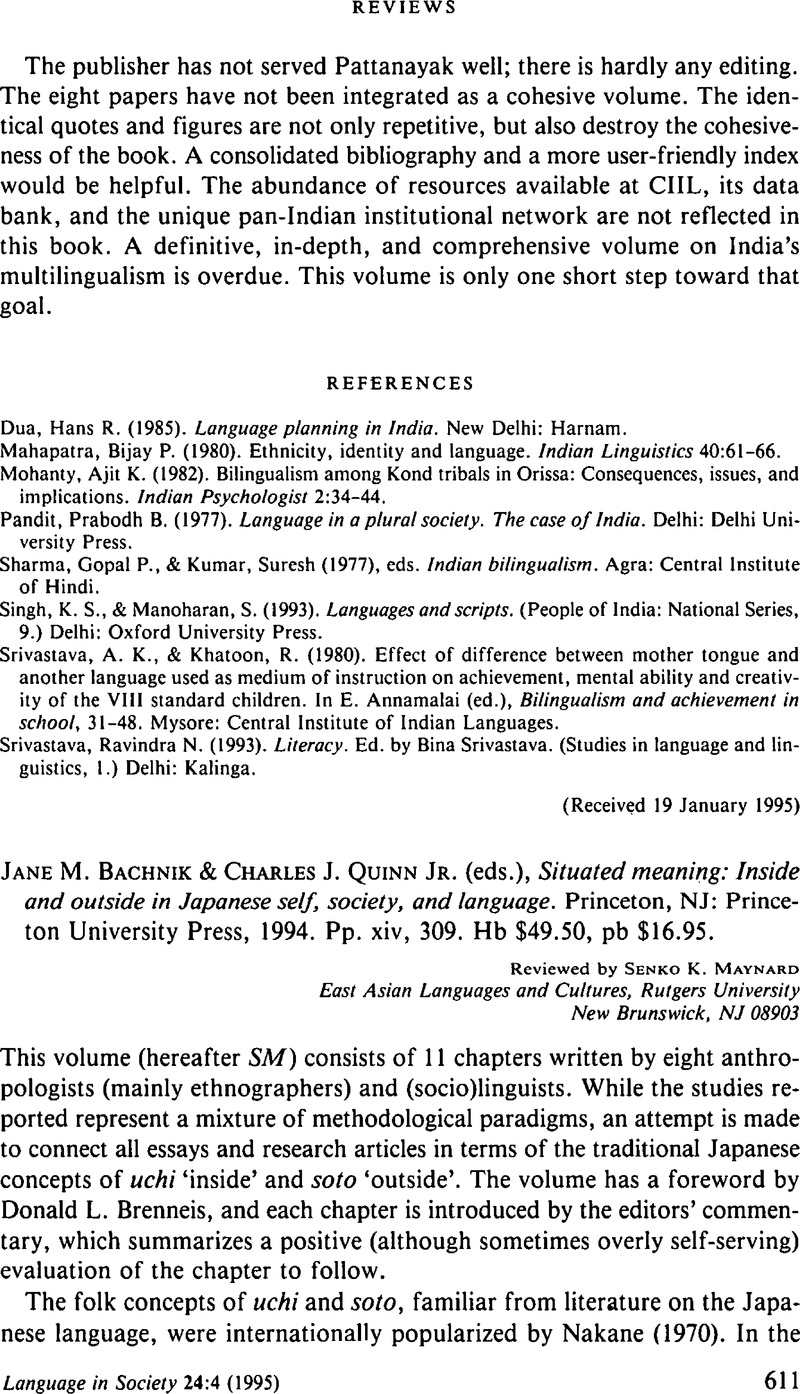Crossref Citations
This article has been cited by the following publications. This list is generated based on data provided by Crossref.
Maynard, Senko K.
1997.
Shifting contexts: The sociolinguistic significance of nominalization in Japanese television news.
Language in Society,
Vol. 26,
Issue. 3,
p.
381.



